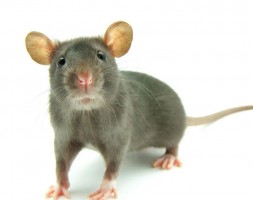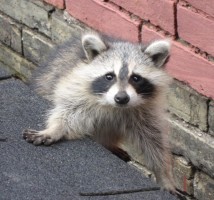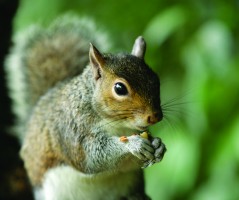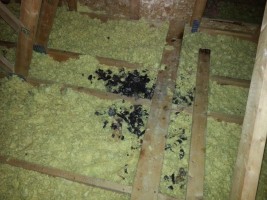As the temperature drops wild animals like raccoons, squirrels, mice and skunks will often go to great lengths to seek shelter. In most cases, these animals can end up in basements, attics and in the chimney. They can also decide to make their winter home under your deck or porch.
Top home invaders:
Mice
Mice are looking to get out of the cold, and store food to survive winter. They can enter your home from an opening the size of a dime,
Raccoons
Raccoons begin mating in January and February and will be looking for a warm place to deliver and raise their spring babies.
During the winter months, juveniles born the previous year will leave the maternal den site and seek out their own dens. Raccoons mate during mid to late winter, usually between January and March, with a gestation period of approximately 63 days.
Squirrels
Squirrels begin mating in February and getting prepared for spring babies.
It doesn’t take very long for a group or family of squirrels to inflict thousands of dollars in home damage by destroying insulation and chewing building materials.
Skunks
Skunks typically don’t make their own homes, but create dens from burrows made by other animals. But during the warmer weather skunks tend to den above ground, and may sleep under porches, stoops, decks, sheds, or foundations. They spend prolonged periods inactive inside their dens during winter which can make their removal difficult. It is important to try and remove them in fall before the ground freezes.
The dangers of wildlife in your home:
Here are just some of the most common types of damage:
- Electrical Wiring –This type of chewing is an incredibly dangerous fire hazard. Each year squirrels and rodents are responsible for many house fires in Canada.
- Structural Wood – In addition to electrical wires, squirrels and rodents also love to chew wood. In the same way they gnaw on fence posts and tree limbs, they also chew attic and roof beams.
- Insulation Damage – Squirrels love to build nests out of the insulation they find in attics. They will shred, compact and push insulation to build nests inside the house. This behavior makes the insulation ineffective and leads to increased heating and cooling bills for homeowners.
- Odor – With time, the smell of urine and feces can begin to penetrate building materials causing the entire home to take on an offensive musty odor.
- Water Leaks – When animals chew on the exterior of your home you’re left vulnerable to costly water damage repairs.
- Droppings- animals droppings can carry danger health hazards
Prevention: How to make sure wildlife doesn’t make its way into your home
- Make sure that all eaves are in good condition and that there are no weak areas or holes which would allow access to the attic.
- Check that roof shingles are in good condition, replacing those which are curled, cracked, worn or missing.
- Ensure that chimney caps are installed and securely fastened. Screen or cover window wells.
- Annually remove debris from eaves troughs to prevent overflow or wood rot and check for damage from ice and snow.
- Trim tree branches that overhang the house and remove unused TV towers.
- Check for possible access to outbuildings and garages using the same methods as for the house.
- Keep pet doors locked at night and keep pets indoors.
- Make sure there are no holes or cracks in your home
- Don’t leave garbage lying around, keep all animals food sealed and away
Note:
Homeowners should not attempt to complete these repairs on their own if conditions on the roof are hazardous or if they are uncomfortable with heights.
If you think you have an animal in your home, you should not try to remove them yourself. These animals have been known to carry some infectious diseases and they may become aggressive if they (or their young) feel threatened. It’s always better to call Skedaddle Humane Wildlife Control. Our trained technicians are here to help.
The Skedaddle Humane Wildlife Approach
A detailed home assessment:
The first step to resolving any wildlife conflict is a correct diagnosis of the problem. To do this, Skedaddle Humane Wildlife Control technicians perform a 35-50 point inspection of your property, including the attic. We look for signs of wildlife activity and building damage around your home to determine the steps required to remove and exclude any and all wildlife.
A humane removal
When it comes to solving wildlife conflicts each situation is unique. That’s why we pride ourselves on implementing customized solutions that take into account both the construction of your home as well as wildlife biology and behavior.
Clear and Clean
Our experts will be looking for signs of wildlife damage and contamination around the home. Employing the industry’s leading techniques and equipment, like powerful trade vacuums and advanced breathing equipment, our equipped technicians make it priority to clear contaminated materials from your home and return it to a healthy, livable state. Once the area is clear and clean, the team prepares to install environmentally conscious cellulose insulation to replace what has been removed.
If you want to wild proof your home, or you think you may have animals living inside, contact us at 888-592-0387.
Proudly Serving: Ottawa, Montreal, Halifax, Hamilton, Burlington, Oakville, Mississauga, Brampton, Kitchener-Waterloo, Guelph, Cambridge and the Niagara Region








